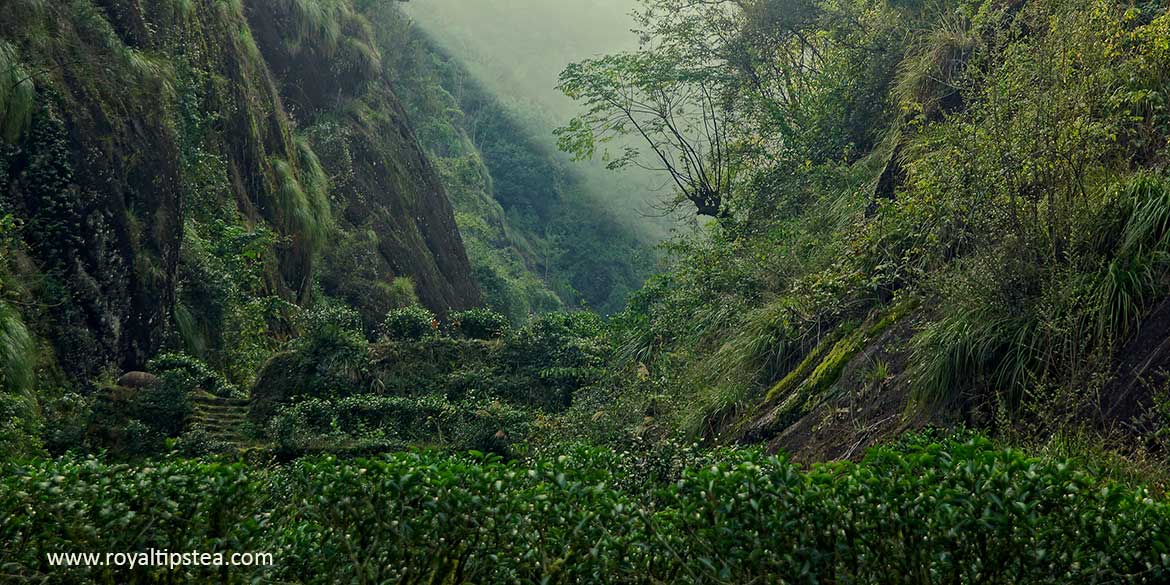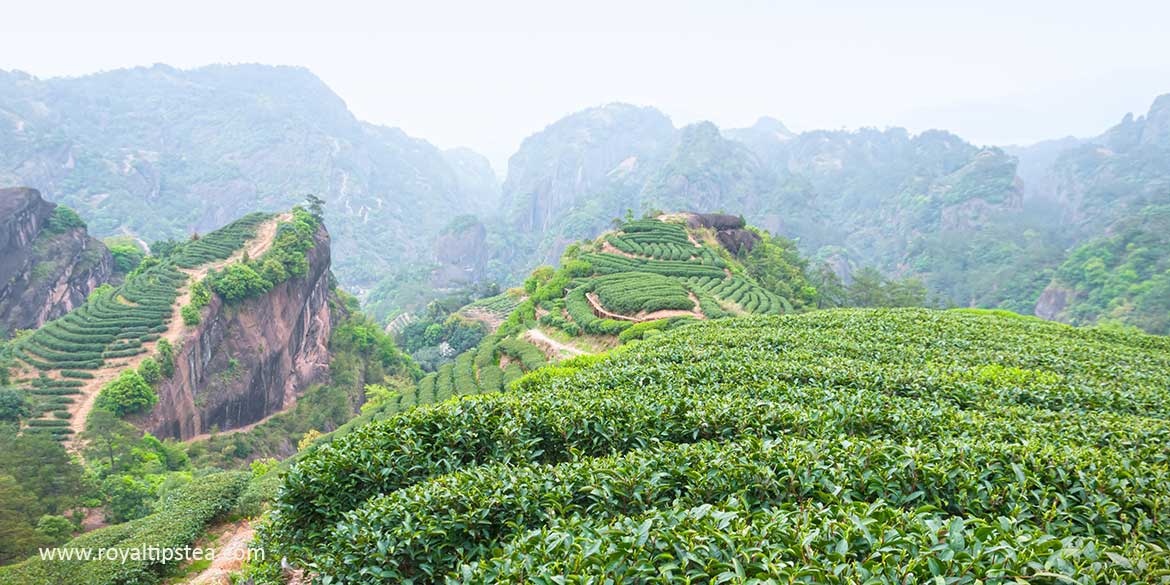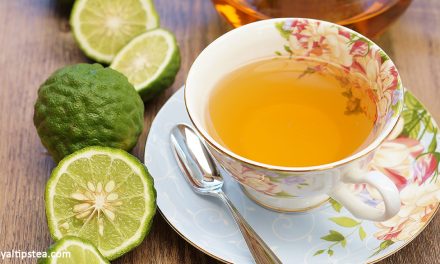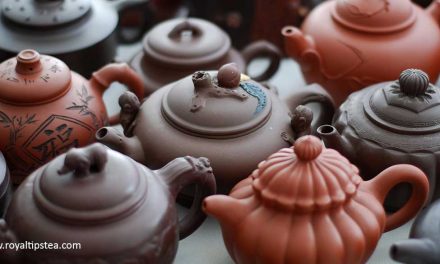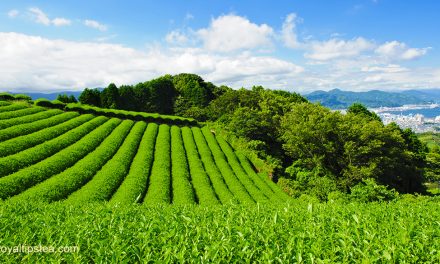What is a tea terroir?
The word “terroir” is used in the world of tea in exactly the same way it is used for wine. It is a French word that expresses the understanding that the flavour and character of an individual tea is influenced by much more than the genetic make-up of the plant or the processing methods employed to manufacture the tea.
It refers to everything that nature brings to each tea and includes the tea’s exact location, the altitude where it grows, the climate and weather patterns, the topography of the area (whether the land is flat or steeply sloping, etc.), the soil, the minerals in the soil and the drainage of the soil, and the local eco-system. All these factors add to the unique character of each individual tea.
Geographic location
The exact location of a tea plant affects the way in which the plant grows. If it grows on or near the equator, it will grow all year round with only slight variations in the weather. If it grows north or south of the equator, the plant will grow according to the seasons.
¿How does the location affect the flavour profile of the tea?
– In the chilly temperatures of the winter months, it will not grow at all and will only wake up and start pushing out new leaf shoots in the spring when the sun begins to bring some warmth back to the soil, and the first rains fall.
– In colder, dryer periods the plant grows very slowly and so has time, in quite stressful conditions, to create wonderful subtle flavours in the leaf.
– When the weather is warmer and wetter in the late spring and summer, the plant grows more quickly and produces stronger but plainer flavours.
– As temperatures drop and rainfall decreases in the autumn, the plant growth slows down again and so teas have a more interesting flavour profile.
In every location where tea grows, these patterns are different and so the plant growth and the flavour and aroma of the tea vary accordingly.
Altitude
Altitude is an extremely important element in tea character. When teas grow at the top of mountains at high altitudes, the weather is cooler and this causes slower growth. And mountain peaks are often surrounded by swirling misty clouds, which protects the tea from scorching sun but also cut out a certain percentage of light.
This means that the tea leaves contain more of the sweet amino acid called L-theanine which gives the tea a much sweeter, smoother, umami character. In sunlight, the sweet amino acids convert to bitter polyphenols and in reduced light, fewer amino acids are converted, so the tea tastes sweet.
Shaded teas such as Japanese Gyokuro and Kabesucha teas, or China’s Mist and Cloud teas such as Lushan Yun Wu, are soft and sweet, velvety and umami. At lower altitudes, teas such as Assam and Low-Grown Ceylon grow much more quickly and robustly and their flavours are stronger.
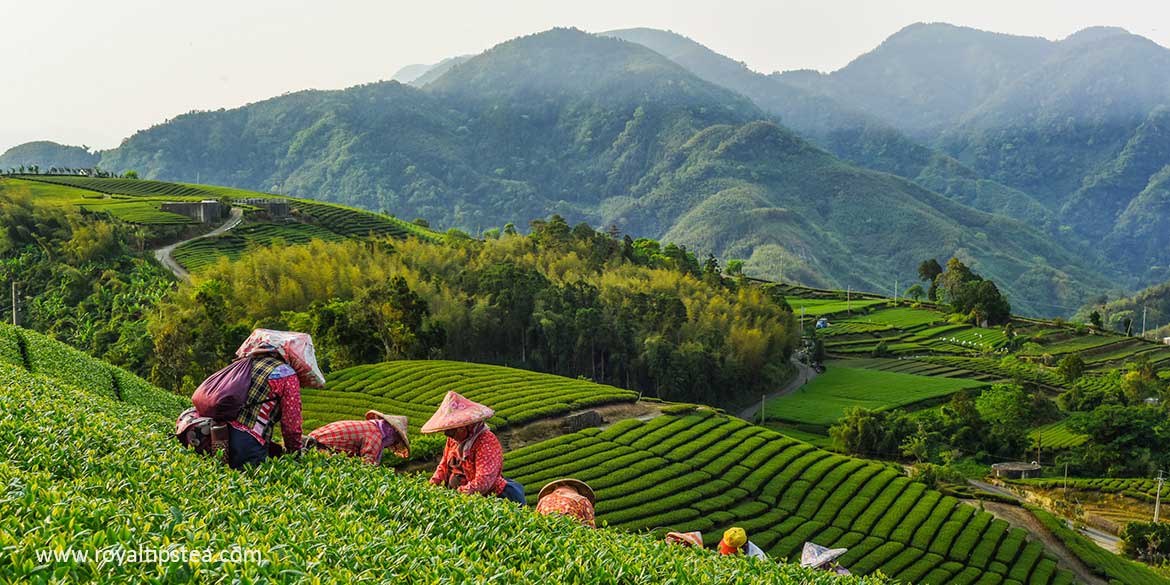
Climate
Climate and weather patterns affect the plant for the same reasons. When the weather is hot and wet, the plant grows faster; when the temperatures are cooler and /or dryer, the growth of the tea slows down. So mist or cloud, dry weather and cool temperatures develop lighter, more delicate, sweeter teas; clear skies, heavy rain and high temperatures make teas grow faster and so develop stronger, less subtle flavours.
Wind and frost also contribute to the development of character in particular tea. In Uva in Sri Lanka, the peak season teas from the high mountain district, picked during July and August each year, have a powerful mouth-filling mentholated flavour profile due to the drying Cachan wind that blows fiercely through the region for a period of about eight weeks. The plants react as if to drought conditions and the consequent chemical change that takes place in the leaves to cope with lost moisture gives the teas their unique wintergreen character. In the high Nilgiri Hills of Southern India, the tea gardens suffer frost attacks in January and February each year and the extreme cold stresses the plants and gives the teas a delicate fruity character that is quite different from the character of Nilgiri teas grown at other times of the year.
Soil and relief
The lie of the land (the topography) affects how well the soil drains after heavy rainfalls and if tea plants are left standing in water, they will quickly die. They need plenty of water around their roots but that water must drain away quickly. Sloping land is therefore much better for growing tea, and anywhere that is very flat and has soil that traps water will find it very difficult to grow tea successfully.
The minerals in the soil also add to the aroma and taste of a tea. For example, in the Wuyi Mountains of Fujian in eastern China, the rocky soil gives the teas a very particular mineral, wet stone or ‘petrichor’ character, called in Chinese ‘Yanyun’, or ‘rock rhyme’. A great example of this is a Da Hong Pao (Big Red Robe) rock oolong tea.
Volcanic soil is particularly good for tea growing as it contains so many minerals (including calcium which allows the plant to produce strong roots), and the rich mix adds to the flavour in the leaves.
